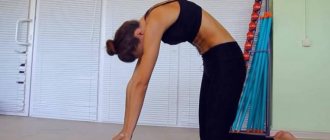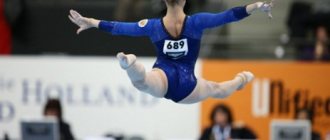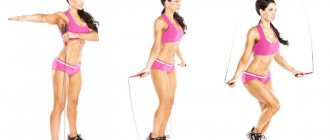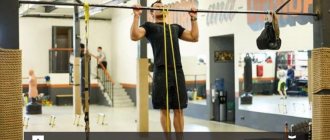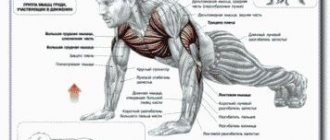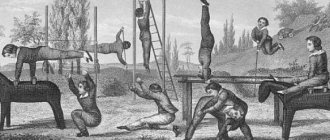Running is one of the most popular types among all sports disciplines. Running is practiced not only by amateurs who want to get in shape and stay healthy, but also by professionals. Running disciplines are a component of athletics and belong to the Olympic sport. There are differences in running between amateur and professional sports. For those who want to benefit from such a discipline, recommendations are provided on the technique and frequency of independent training.
The benefits of running for men and women
Running can provide many benefits for your health and overall functioning. Only if you have the correct running technique, breathing, and moderate heart rate can you benefit from training, otherwise you can do just as much harm.
- Running strengthens the cardio-respiratory system - the heart, blood vessels, improves respiratory function and improves blood circulation.
- Tones all muscles, organs and systems of the body.
- Improves the function of the musculoskeletal system - strengthens bone tissue.
- Improves blood circulation in the pelvic organs - helps improve sexual function.
- Saturates all cells with oxygen, improves overall physical and emotional well-being, prevents stress, and improves immune function.
What muscles work when running
The main load when running falls on the lower leg muscles (soleus, gastrocnemius), thigh muscles - quadriceps and biceps, as well as the gluteal muscles. But you cannot judge running only by the movement of your legs; other muscles also receive sufficient load.
Due to the simultaneous movement of the arms while running, the torso muscles, abdominal muscles, back muscles and arms are also constantly under tension. Therefore, running affects even the smallest muscles of the body, strengthens not only the legs, but also tones the whole body.
Competitions
Conditional competitions are divided into several types:
- individual races;
- team relay race.
Running competitions are held at different levels: professional and amateur.
The first type includes the Olympic Games, world and continental championships. Today, tournaments are held at the level of state, regional, and city championships.
A separate category is represented by interuniversity, school, as well as amateur and professional competitions related to special training.
Running technique
- When running, it is important to keep the axis of the spine in a natural position - you should not pull the pelvis back, performing a strong tilt, or push the pelvis forward, tilting the torso back. Both positions will slow down your speed and have a negative impact on your joints and spine.
- The foot must touch the entire surface of the ground or path. Land on the center of your foot, not your heel or toe.
- Move your arms at the same time as you move your legs , your arms help you accelerate better and make your torso muscles work.
- Don't hold your breath or breathe too quickly. Inhale through your nose and exhale through your mouth, releasing the air slowly.
- Try to inhale when your right foot touches the floor , this will avoid internal pressure on the organs and eliminate pain in the side.
- The feet should be in a parallel position to each other , without moving inward or apart.
Sprint training
Treadmill workout
- Warm up easy run: 1 lap
- Body part: Quadriceps Equipment: Exercise
Treadmill workout
- 6-10 races of 100 meters
- Body part: Quadriceps Equipment: Exercise
Quadriceps stretch with squats
- 1 minute
- Body part: Quadriceps Equipment: Body weight
Quadriceps stretch while kneeling
- 1 minute
- Body part: Quadriceps Equipment: Body weight
Add to Calendar * Add to My Workouts * Print Workout
* — The service is in beta testing
After each 100-meter race, return to the starting line at a slow pace or, if you're running in a stadium, complete a lap. Your rest between races will be this walk back to the start line. If you still feel tired when you reach the line, rest for another minute or two before starting the race again.
After each workout, it's important to cool down a bit (to prevent cramps), which will reduce the amount of lactic acid in your legs. After completing such a workout, you will feel your body in a new way. Your legs will become more and more elastic, and your abdominal muscles will feel toned.
Every time you run, you lift your legs into the air. When you sprint, you also work your abdominal muscles. A world-class sprinter runs 100 meters in about 44-47 steps, and the average person is likely to cover this distance in about 57-60 steps. So think about it: you just worked your abdominal muscles 57-60 times in one 100-meter race! What if you do 6 of these runs? This sounds incredible since most people don't do that many squats in one set or even in an entire workout!
If you can incorporate sprinting into your weekly training, you will be able to:
- lose weight faster;
- work out the abs;
- increase metabolic rate;
- strengthen your legs and buttocks.
We hope that now you have appreciated all the benefits of running for your figure and will include sprinting in your training program.
Types of running
It is important to understand that professional and recreational sports have their own differences, requirements and goals. Professionals must show maximum results in a short time. Health running has its own goals and methods.
In athletics, there are the following running disciplines.
- Sprinting – designed to cover 30 m, 50 m, 60 m, 100, 200, 300 and 400 m in a short period of time.
- Middle distance running – covering 800, 1000, 1500, 2000 and 3000 m.
- Long-distance running is overcoming more than 3000 m, or daily running, in which you need to run the maximum possible distance in a day.
- Marathon and half marathon – in the classic marathon the distance covered is 42.195 m, the half marathon is 21 km.
- Steeplechase - designed to overcome obstacles in a circle of a stadium or arena for 2000 - 3000 m.
- Hurdling – performed at distances: 50 m, 60 m, 100-110 m, 300 and 400 m, with light hurdles installed.
- Relay running - passing the baton from one athlete to another, performed 4x100 m, 4x400 m.
In fitness , even school programs, and recently in CrossFit, the following running standards are often used.
- Shuttle running - there are different distances, at which the standard must be fulfilled in the shortest possible time. This type of running develops speed, endurance, and agility, so it is often used in popular fitness areas.
- Interval running – performed with alternating acceleration and rest (walking), suitable for training aimed at losing weight and increasing endurance.
- Jogging or jogging is a moderate run at a speed of 7-9 km per hour. The style is designed for health training, suitable for people of different ages and physical fitness.
- sprint running is a type of athletics running over short distances, but is often also used in fitness for interval training, for example, alternating strength exercises with maximum acceleration over short distances (up to 400 m).
What to choose?
The choice of sports direction depends on the goals. If you want to lose weight quickly and are not shy about exercising outside, then suitable disciplines would be jogging, fartlek and interval running. For those who want to make their figure slimmer without leaving home, we recommend running exercises on stairs and in one place. Fans of active outdoor recreation will appreciate Rogaining and cross-training.
If your dream is to run a full marathon, you can't do it without an experienced mentor. Sign up for special preparatory courses, where you will be given a training system and taught how to eat properly.
Well, if you are choosing a sports section for a child, we recommend athletics. Even if the child does not become a champion, he will still receive an athletic “base” that he will apply in other sports and in life.
What is the best time to run?
There is no specific best time for everyone, the timing of training varies from person to person. The body must awaken; for most people, training in the morning causes great difficulties, since the body has not yet recovered from sleep. It is considered to be the most effective training in the daytime and evening, especially aimed at interval, sprint, and shuttle running. Jogging is suitable as a health-improving workout in the morning to boost your energy levels and improve your health.
Where to start
Where to start if you are new to jogging? Here are some useful tips:
- First of all, it is advisable to consult a doctor, especially if you have not been involved in any sport for a long time.
- It is important to use good sports shoes with good cushioning, as this is a continuous impact action on our joints. Therefore, the more vibrations our shoes absorb, the less they will reach our ankles, knees, spine, etc. Running on soft surfaces such as grass will also help.
- The clothes we use should be comfortable and breathable to make running as comfortable as possible. And it should also be adapted to the weather of our region and time of year.
- Before you start running, it is very important to do a proper warm-up. First of all, it will prepare us for the subsequent sports practice, in which we mobilize and stretch the entire body and begin to warm up.
- The basic technique is to ensure that when we run, we must keep the torso upright, the arms half bent and the leg will support with a slight flexion of the heel of the foot, ending the movement on the tips of the toes.
- Breathing should be normal.
How long should you run?
Any running workout for developing endurance, losing weight or getting healthy should not last more than an hour. This is fraught with excessive stress on the heart, which contradicts the health-improving properties of running. Depending on the goals , the duration of the training is selected individually. To lose weight and strengthen the body, 40-60 minutes of aerobic exercise is enough. To improve general condition, maintain shape and health, people of any age (without contraindications) can exercise for 30-40 minutes.
You shouldn't train every day; alternate a running day with a rest day. You can also train 4 times a week, but you must leave 3 days of rest for recovery.
Running safety
- Always start your run by walking or jogging slowly to warm up your muscles to prevent straining your ligaments, muscles and tendons.
- Start running only without contraindications and restrictions to training - diseases of the spine, joints, veins, injuries and fractures, hypertension, heart failure, as well as inflammation and acute pain.
- Choose the right shoes and clothes that do not restrict movement. Running shoes must be the right size and designed specifically for running.
- Choose flat surfaces for running , stadiums, parks, treadmills. Avoid dirt or rock surfaces, which can cause injury if you slip or place your foot incorrectly on uneven surfaces.
- Do not stop abruptly , immediately reducing the speed, this is a big burden on the heart. Slow down gradually, then slowly start walking.
- An important condition for running training is timely replenishment of lost fluid , which is greatly lost during aerobic exercise. If you feel thirsty, take a few sips of water and continue running. Losing a lot of fluid and feeling thirsty for a long time can lead to dehydration and even fainting.
General rules of athletics
All rules of athletics are approved by the international athletics organization AIIF. First of all, all athletes who are involved in athletics in sections and plan to participate in competitions must be healthy and have no medical contraindications.
Athletes' clothing and shoes must be selected in accordance with the size of the participant in the competition, and they must be clean. There should be no foreign sharp objects, laces, ropes. It is prohibited to use any devices that can visually change the shoe size.
- Women compete with women, men with men.
- Athletes should not use prohibited drugs.
- There are age divisions: boys and girls (16 and 17 years old); juniors and juniors (18 and 19 years old).
- Before the start of the competition, participants are assigned and given numbers that are attached to the chest and back.

